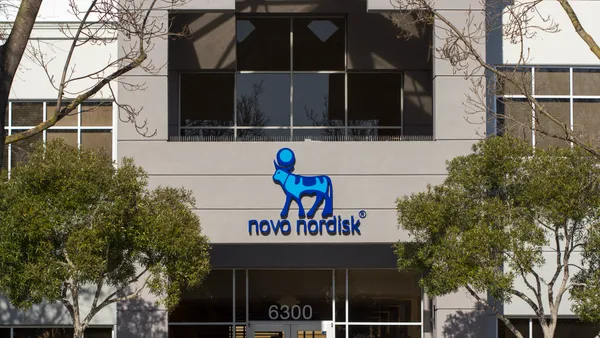Effective CRM Crucial to Pharma Companies
Customer relationship management (CRM) initiatives in the pharmaceutical industry lack a firm definition, according to a recent study from Cutting Edge Information. The report, Pharmaceutical Customer Relationship Management, addresses the effectiveness of CRM initiatives and finds that for some companies, CRM primarily means a database that tracks campaign efforts, whereas at other companies CRM has flourished into a culture of sorts that encompasses all of the marketing efforts for a brand. For a company’s CRM program to be effective, many parties must be involved. “Internal buy-in and cross-functional support are absolutely crucial to CRM success,” says Amanda Zuniga, senior research analyst and lead author of the report. “Education is the first step companies should take.” Once a company has developed a solid understanding of what CRM means to its organization, the next step is to share this knowledge. For example, the sales managers need to be proficient with the CRM system so that they can train and tutor their sales representatives in using the tool. The sales reps themselves must be able to act upon that knowledge. Although it can be challenging and costly to establish technology that is easily accessible and flexible to meet various needs, it is worth the expense and effort. Developing and managing CRM programs requires adequate resources at the outset, and pharmaceutical companies must provide sufficient investments annually to support their programs. These investments, however, prove their worth when companies are able to develop lasting relationships with existing patients. For instance, it costs a pharmaceutical company, on average, 62% more to attain a new patient than to retain an existing one. The study shows that although CRM is a relatively new arena for many pharmaceutical companies, the industry clearly recognizes the value that developing relationships with key audiences can have on companies’ bottom lines and overall standing within the market. Transdermal Drug Delivery Market Will Leap to $7.9 Billion With new biological therapeutic treatments being developed at a record pace, their potential could be compromised by the lack of adequate drug delivery systems. Consequently, transdermal and transmucosal delivery systems, with their ability to deliver substantial amounts of drugs continuously, are a hot commodity, with 2006 revenue reaching $6.7 billion. According to Drug Delivery Markets, Vol. IV: Transdermal and Transmucosal Delivery Systems, a new report from Kalorama Information, increasing acceptance of such delivery as a preferred method of administration will push the market to almost $7.9 billion by 2010. Since the OTC transdermal nicotine patch was approved in the United States 12 years ago, the acceptance and popularity of this form of drug delivery had a market segment valued at $5.7 billion in 2006. More recently, market growth has been driven by an increase in biotechnology drugs that require novel delivery technologies. At the same time, continued demand for nicotine patches, hormone therapies, pain relief, and other treatments is contributing substantially to the rise of pharmaceuticals using transdermal drug delivery systems, as well as the delivery systems themselves. DTC Advertising Drives Consumers Online for Disease Information One of the most popular trends in pharmaceutical marketing during the past few years has been the shift toward unbranded advertisements focused on building awareness for a certain condition and, in many cases, encouraging consumers to visit a Website for more information about that condition. A recent study from Manhattan Research demonstrates the impact of these advertisements on the health information-seeking behavior of consumers exposed to these advertisements. The rankings are based on the comprehensive online consumer research study with 4,965 U.S. adults. Although many in the pharmaceutical industry have questioned the viability of this approach, the study, Pharma Consumer v6.0: The Future of Integrated DTC Marketing, demonstrates that unbranded ads are having an impact. Patient retention It costs a pharmaceutical company, on average, 62% more to attain a new patient than to retain an existing patient. Source: Cutting Edge Information, Durham, N.C. For more information, visit cuttingedgeinfo.com. The top 5 conditions researched online prompted by TV DTC According to Manhattan Research analysts, in some cases more than one-third of consumers researching a certain condition on-line report that research is the direct result of a television advertisement they saw. 1. Restless Leg Syndrome (RLS) 2. Smoking Cessation 3. Erectile Dysfunction 4. Acne 5. Human Papillomavirus (HPV) Source: Manhattan Research, New York. For more information, visit manhattanresearch.com. Follow Up Cutting Edge Information, Durham, N.C., provides research and consulting to the pharmaceutical industry and the financial services industry. For more information, visit cuttingedgeinfo.com. Kalorama Information, New York, a division of MarketResearch.com, conducts independent market research for the life-sciences industry. For more information, visit kaloramainformation.com. Manhattan Research LLC, New York, is a healthcare market research and services firm, laying the foundation for strategic planning for global pharmaceutical, biotech, device and diagnostic, and life-sciences companies. For more information, visit manhattanresearch.com. PharmaTrax June 2007









